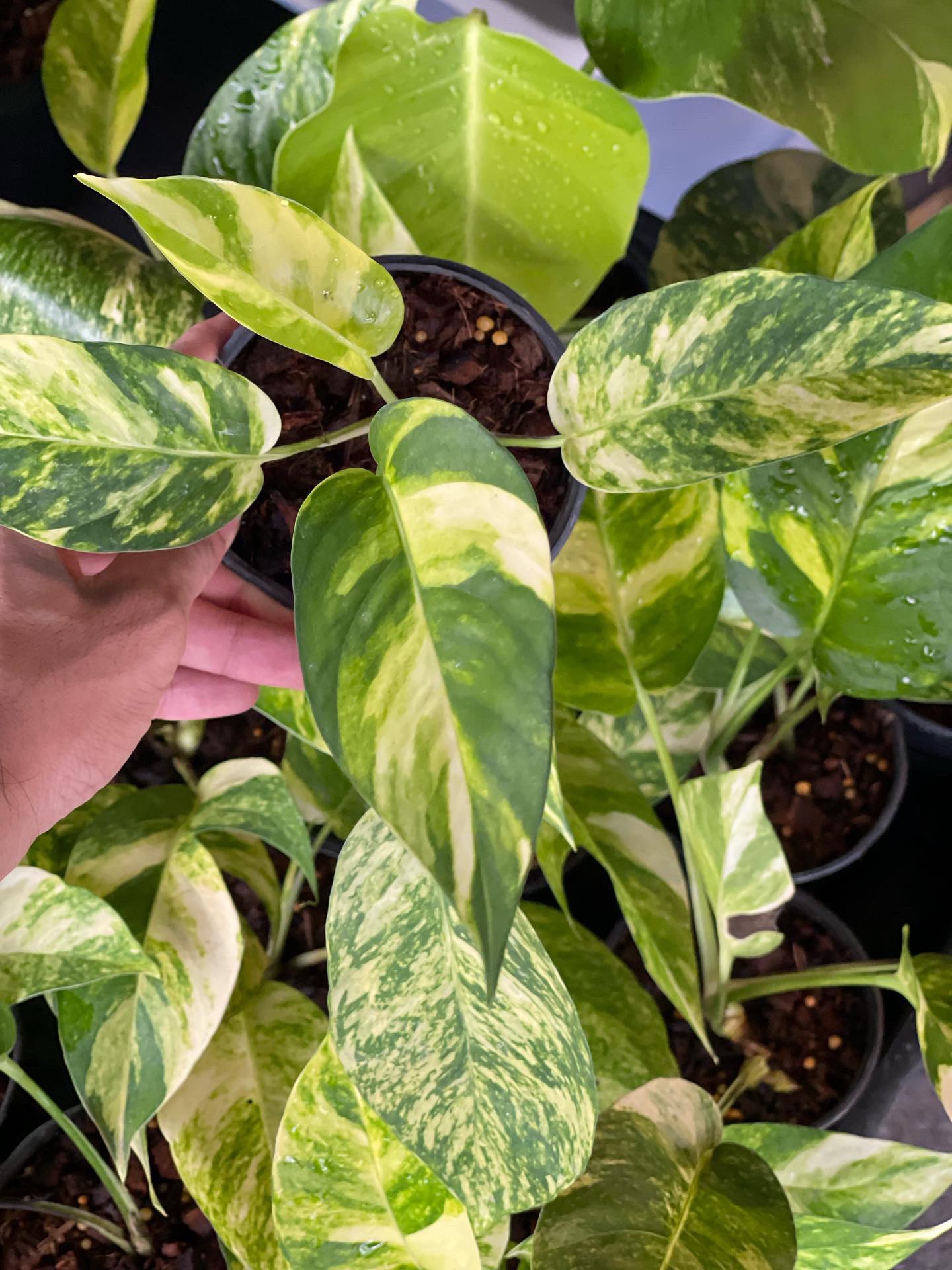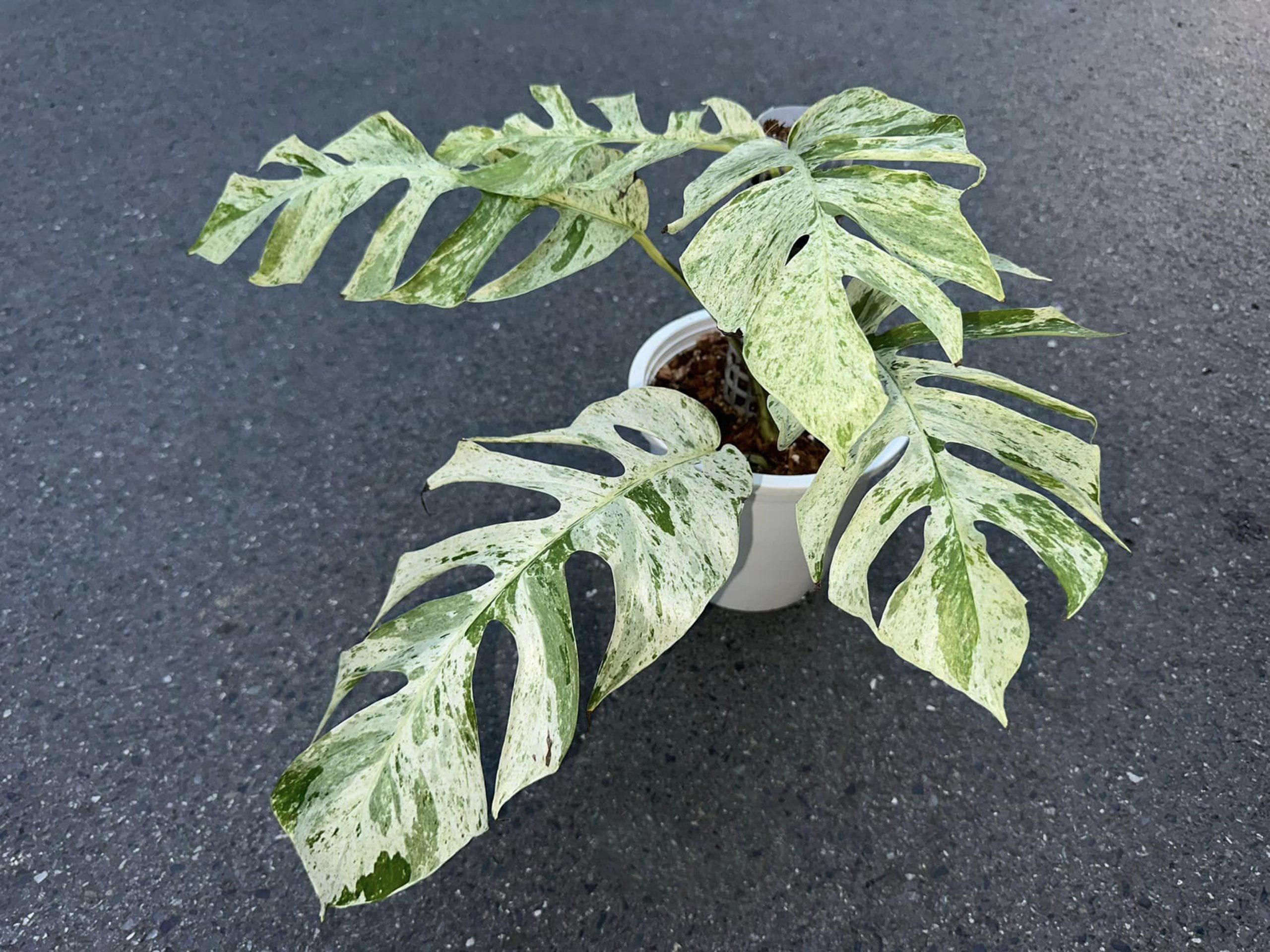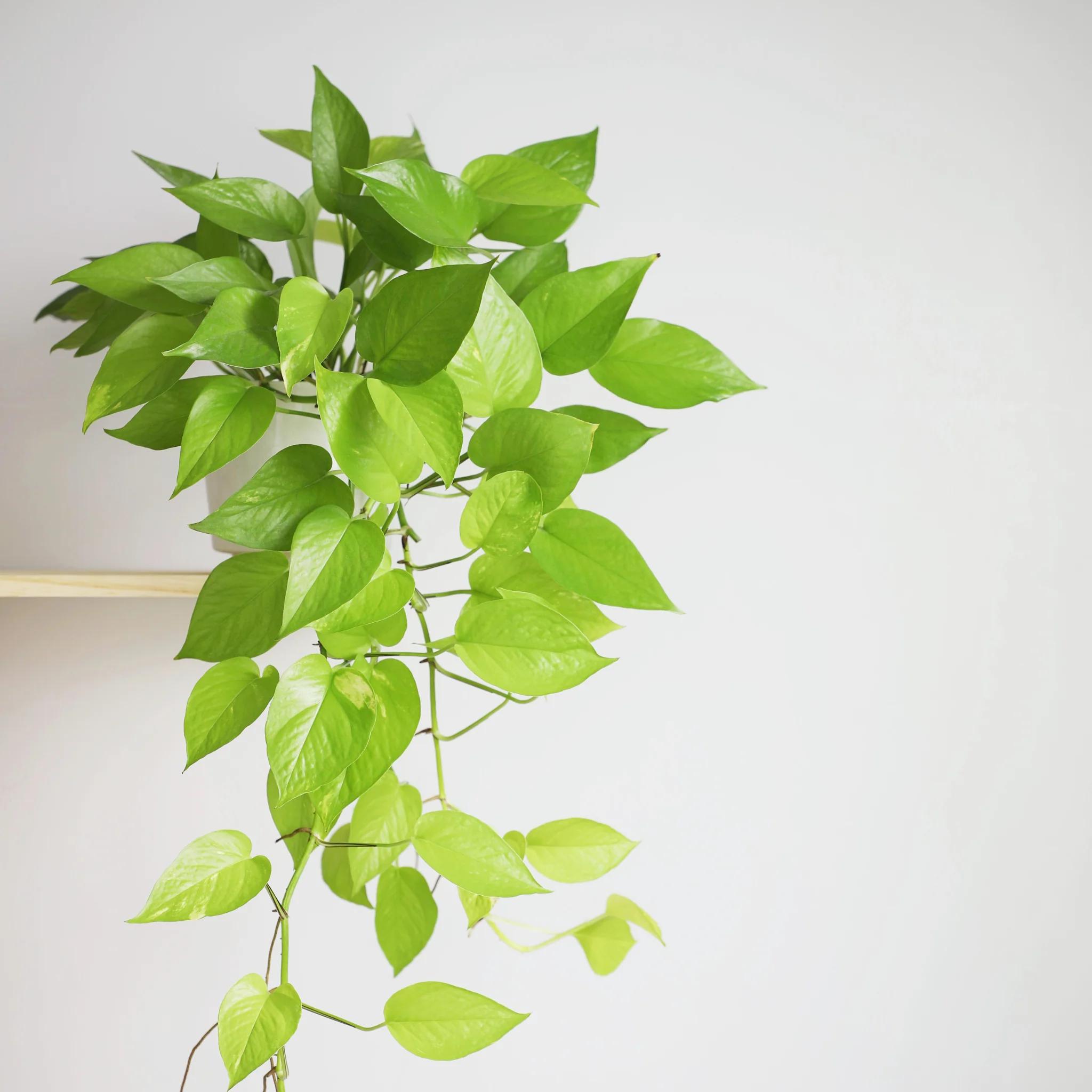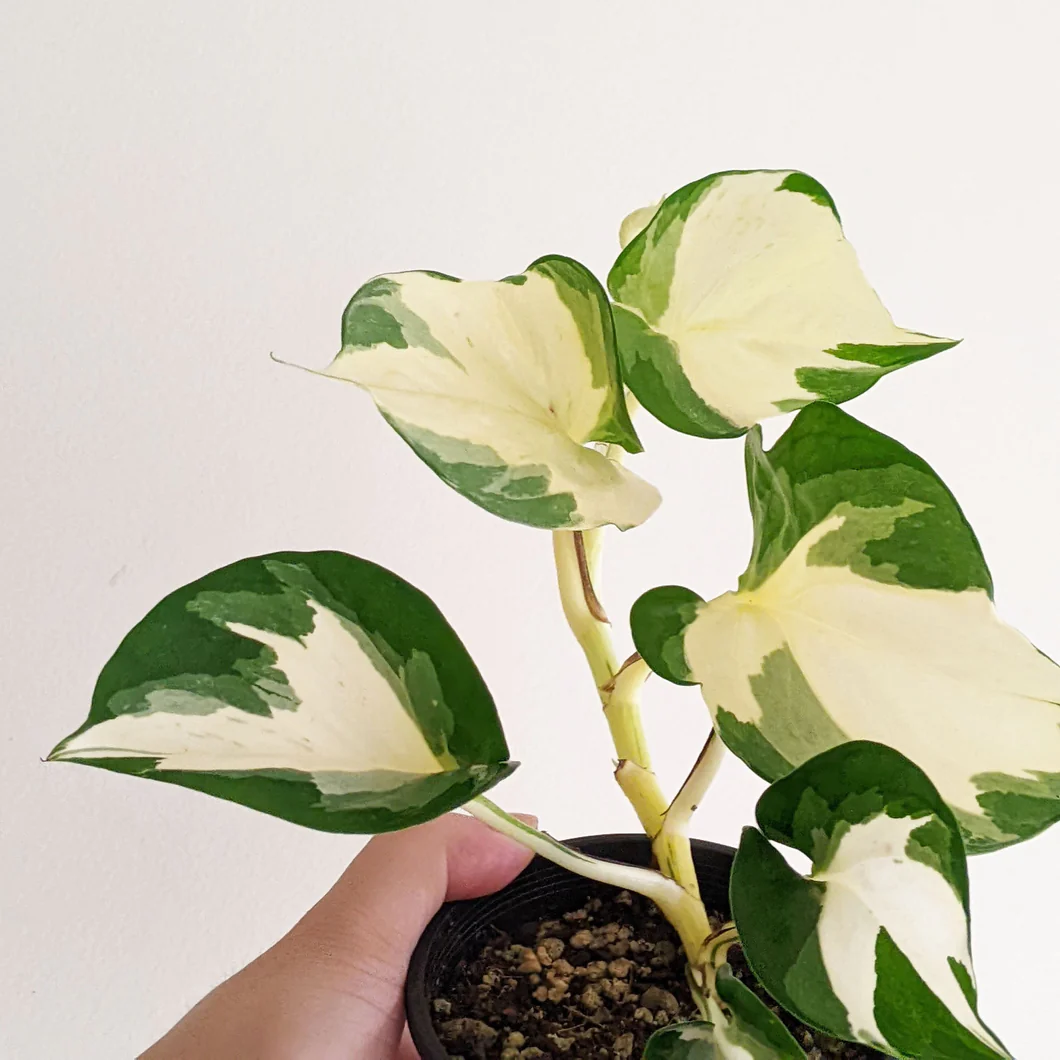Epipremnum is a popular houseplant known for its heart-shaped leaves and vining growth habit. There are several different varieties of epipremnum that are commonly grown as houseplants. In this article, we will explore 5 major types of epipremnum and what makes them unique.
Golden Pothos
The golden pothos, also referred to as devil’s ivy, is perhaps the most popular epipremnum variety. Golden pothos features heart-shaped green leaves with yellow or gold variegation.
Leaf Characteristics
- Leaves are typically 2-4 inches long
- New leaves emerge green and develop golden variegation as they mature
- Leaves can be completely golden or have golden patches, speckles, or margins
Golden pothos is loved for its easy care and versatility. It can thrive in a wide range of light conditions and is great for beginners. Golden pothos is also an aggressive grower, making it ideal for cascading from hanging baskets or climbing up supports using aerial roots.
Growing Conditions
- Light: Can tolerate low to bright indirect light, but grows fastest in medium or bright indirect light
- Water: Allow soil to mostly dry out between waterings. Tolerates occasional droughts once established.
- Temperature: Comfortable from 60-80°F. Can tolerate wider range briefly.
- Humidity: Average room humidity is fine. Higher humidity encourages faster growth
.
Marble Queen Pothos
Marble queen is another pothos cultivar that is almost as popular as golden pothos. It features white or silvery-gray variegation on heart-shaped green leaves. The variegation patterns can range from speckles to large splashes and sectors.
Leaf Characteristics
- Leaves are typically 2-5 inches long
- Leaves are green with white/silver variegation
- Variegation can range from small speckles to large sectors
- New leaves emerge green and develop variegation as they mature
Marble queen pothos requires similar care to golden pothos but tends to grow a little slower. It makes an excellent hanging plant as the long vines with white variegation cascade beautifully over the sides of planters. The bright variegation also helps marble queen pothos stand out in mixed container plantings.
Growing Conditions
- Light: Medium to bright indirect light is best to maintain variegation
- Water: Allow soil dry out somewhat between waterings
- Temperature: 60-80°F
- Humidity: Average room humidity is fine
“Explore the Exceptional 2023 Epipremnum Variegata Collection: A Curated Selection of the Rarest and Most Unique Varieties Available.”

Neon Pothos
Neon pothos features eye-catching leaves that are bright yellow-green in color, unlike the darker hunter green leaves of golden pothos. The leaves are the same heart shape but the vibrant coloring makes this variety truly stand out.
Leaf Characteristics
- Leaves are typically 3-6 inches long
- Leaves are bright yellow-green in color
- New leaves emerge yellow-green right away
Neon pothos retains its bright coloration best in medium to high indirect light. It grows vigorously and trailing vines with the neon green foliage make a bold statement cascading from containers. Neon pothos can tolerate lower light than other varieties but the leaf color will fade to dull green in insufficient light conditions.
Growing Conditions
- Light: Medium or bright indirect light maintains best color
- Water: Allow to mostly dry out between waterings
- Temperature: 60-85°F
- Humidity: Average room humidity is fine

Jade Pothos
Jade pothos is named for its thick, shiny leaves that resemble those of a true jade plant. The leaves are darker green, thicker, and waxier than most other pothos varieties.
Leaf Characteristics
- Leaves are thick, rounded, shiny, and dark green in color
- Typically 2-4 inches long
- Handle low humidity better than other varieties
Jade pothos prefers slightly drier conditions than most other pothos. It’s slower growing but can still reach lengths of 3-6 feet given proper support. The dark green color and thick leaves make jade pothos ideal for low light locations where other varieties would lose leaf variegation or the neon color would fade. It brings great texture and shine to mixed plantings and the vines also make nice table garlands.
Growing Conditions
- Light: Low to medium indirect light
- Water: Allow soil to dry out more before watering next
- Temperature: 65-80°F
- Humidity: Tolerates low humidity very well

Manjula Pothos
Manjula is a patented and exclusive variety of pothos. It is characterized by heart-shaped leaves that exhibit a showy mix of different shades of green paired with white/silver variegation. Each leaf is unique.
Leaf Characteristics
- Leaves show color variations in shades of green, gray-green, and silver
- Leaves are splashed, speckled, or marbled with white/silver
- Leaves are typically 2-5 inches long
- No two leaves look quite the same
Manjula pothos is eye-catching and no other variety can match its variability. It grows at a moderately fast pace but rarely achieves the extremely long vines of faster growing varieties in the same amount of time. Manjula pothos prefers slightly higher humidity than golden pothos and won’t tolerate deep droughts as well either. The unique variegation patterns shine beautifully in hanging containers and it also mixes nicely with other plants.
Growing Conditions
- Light: Bright indirect light maintains best variegation
- Water: Allow soil to dry slightly between waterings
- Temperature: 65-85°F
- Humidity: Prefers average to high humidity

Conclusion
Epipremnum offers houseplant lovers a range of options when it comes to leaf color, shape, size and variegation patterns. The major varieties – golden pothos, marble queen, neon, jade, and manjula pothos – give options for bright color, durability in low light and lower humidity, and uniquely patterned leaves. All share a vining habit that allows them to trail attractively through baskets or climb up supports. With the right variety and proper care, epipremnum can provide a lifetime of enjoyment!
See more 5 Easy Steps to Lush Epipremnum Growth: Master Pothos Care Today!


3 thoughts on “Types of Epipremnum”